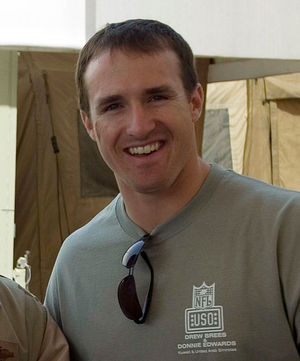Faced with rising violent juvenile crimes, the Colorado Legislature created the Youthful Offender System (YOS) during a special system, charged with acting as a middle tier between Youth Corrections and the Department of Corrections for violent juvenile felons, YOS started out as a rehabilitation program of sorts. Basically a cross between juvenile detention centers and adult prisons. (A lot of times this idea is suggested to families with kids facing jail time. The referrer? Often the Criminal Defense Attorney. Charged with defending you or your child in a court of law, a Criminal Defense Attorney may or may not think a client has a very good case, and often uses the suggestion of YOS as a plea bargaining tool both with parents and the District Attorney.)
The mission statement of YOS reads:
“The mission of the Youthful Offender System (YOS) is to provide a controlled, regimented, and secure environment which ensures public safety. YOS promotes the value of education (academic and vocational), self-discipline, and develops pro-social skills and abilities through an individualized phase program which includes supportive aftercare.
Exactly whether that mission statement has been lived up to during the facilities history is up to the individual to determine. At first, YOS offenders were housed at the Denver Reception and Diagnostic Center (DRDC) before being transferred to out of state facilities with other youth offenders. These offenders or “residents” as they are referred to within the YOS program were sent to quality programs that were not without their downfall while the YOS facility in Pueblo was being constructed.
Residents began returning to Colorado to be housed in the new Pueblo facility which is located next door to the Colorado Mental Health Institute of Pueblo (CMHIP). The new facility featured large rooms, and a somewhat open campus. Many of the buildings were still under construction when the first residents arrived.
Since that time, the facility has been completed, and now has bed space for 256 inmates. Separated into “upper” and “lower” and well as “north” and “south” units, an inmate may be living in an area referred to as “110 Upper South,” meaning that the inmate lives in the building 110, on the upper floor on the north end of the building.
The Program: YOS is built entirely upon a four part program consisting of three “phases” and an entry and punishment boot camp. These phases were designed to break down old behaviors, instill a positive peer based culture, and reintegrate the resident into society with useful skills and abilities.
When a resident first arrives to the facility they will undergo a medical screening, upon approval from the medical staff, they will begin they “boot camp” phase of the program. The first day of the intense and grueling program is referred to as “Hell Day.” The night before “Hell Day” male residents have their head’s shaved, and female resident’s hair is cut to a chin length or shorter. The staff which runs the program, referred to as Drill Instructors, or DI’s are all in attendance for hell day and begin by yelling at the inmates, before forcing them to perform physical tasks such as running or push-ups. If a resident performs poorly, a DI will most likely say, “Is that the best you can do?? My grandmother could do better than that, get moving!” Or a similar demeaning remark.
This program was designed to break down gang mentalities, “tough guy attitudes,” and ready residents for learning. It is similar in nature to the programs of the US Military, and in fact, many of the DI’s at the facility are ex-Military, or currently in the Reserves.
During this 30 day period, residents march to and from meals, have little to know social interaction, and are not allowed to receive visits from their families, or make phone calls. Inmates are taught to repeat phrases such as “Sir, Integrity is the quality of absolute honesty, Sir.” To finish the boot camp program, the resident must show marked physical stamina improvement, as well as demonstrate basic marching skills and techniques.
Upon “graduation” from boot camp, residents are moved to Phase I, the longest phase of the program. During Phase I the residents live in buildings, and participate in school classes, work towards a GED, or take college classes. In addition to this, they also attend programming classes such as Drug and Alcohol classes, Gang Class, Anger Management, and others. When not in class, residents perform jobs at the facility, teacher’s aides, library assistants, groundskeepers and others are just some of the jobs offered.
Finally, residents must be involved in group therapy with the other residents in their living unit. Being a positive peer culture, YOS depends on the group to police itself, and group punishments are often given. When a resident finds another resident breaking a rule, they “confront” the resident with a non-verbal warning. If the action continues, the inmate then gives the other resident a verbal warning. If that resident continues to violate the rule, there may be what is called a “huddle up” where all the members of the group gather in a circle to confront the resident for their negative behavior. A “huddle up” can be held for almost any issue, whether an inmate repeatedly has poor personal hygiene, or is engaging in behavior that is otherwise a violation of the rules.
If a resident fails to respond to a “huddle up” and continues the negative behaviors, a staff member may be called for assistance, at this point, if the resident still refuses to correct the behavior, they may be sent to remediation, which is a more strenuous boot camp program designed to “re-focus” the resident. Those in remediation not only perform boot camp activities, but also perform chores around the facility, think of it like a modern-day chain gang without the singing.
Once Phase I is completed, residents are moved to Phase II. A program designed to help with re-entry to society. Residents are taught life skills such as money management, and also take trips to community events. These residents are allowed to keep “street clothes” in lockers at the facility, which they wear on outings. An outing may be to help out at a local nature center, or to a sporting event, such as a high school basketball game. There have also been outings to local churches.
Phase II usually consists of a ninety day program, after which residents are moved to Phase III, which for most consists of a halfway house specially designed for the residents. Here, residents work, or enroll in college, and save money for an apartment, or to go home to live with their parents. Because many of the residents are over the age of 18, there are a number of them who will be living on their own for the first time. Phase III provides programs and helps residents prepare for life in the “real world.”
At any time, throughout the program a resident can be sent to remediation for a rule violation. If a resident breaks a major rule, the YOS officials may decide that the resident is not suited for the program, and the resident will be “terminated” from the program and sent to Removal From Program or Population (RFP). The sentencing structure for YOS is unique in that a judge sentences an offender to an adult DOC sentence which is then suspended, meaning they will not have to serve it if they complete a successful sentence at YOS. Usually YOS sentences are considerably less than their adult DOC counterparts. For example, a resident may be sentenced to 8 years DOC, with a 3 year YOS sentence. However, if an inmate is terminated from the YOS program, he or she must go back before the judge to be re-sentenced to the adult correctional system. Rarely, a court will refuse to sentence the resident to adult DOC, and will send them back to YOS saying that they disagree with the YOS reason for removal from the program. If this happens, a resident is brought back into the program as if they had never left.
Overall, like any facility, YOS has its problems, and there have been a lot of them. A large amount of the problems have occurred with the female residents. Whether those problems have initiated between female residents and other male residents, or female residents and male staff members, there has been more than one accusation of a “sex scandal” at the facility. In fact, at least one child was conceived within the facility.
Please keep in mind that the day to day operations of the facility are constantly changing to address new issues and attempt to ensure the best possible facility for violent youth. Therefore, some of the policies and procedures may have changed. Overall however, this article should have given you some sort of idea about what YOS has to offer, and what youth offenders can expect if they are sentenced to the facility.


